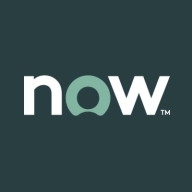

HPE OneView and Loom Systems compete in IT management software. HPE OneView seems to have the upper hand in pricing and support, but Loom Systems stands out with its monitoring features.
Features: HPE OneView includes advanced automation, seamless integration with HPE hardware, and comprehensive infrastructure management. It enables consistent management and scalable solutions. Loom Systems specializes in AI-driven monitoring, offering predictive analytics, proactive alerting, and anomaly detection.
Room for Improvement: HPE OneView could enhance its predictive analytics capabilities and offer more flexible deployment options. Loom Systems may benefit from better integration with non-cloud environments, enhanced hardware management tools, and more competitive initial pricing strategies.
Ease of Deployment and Customer Service: HPE OneView provides straightforward deployment with strong integration for HPE hardware and robust customer service. Loom Systems features a cloud-based setup that focuses on quick deployment and proactive support.
Pricing and ROI: HPE OneView often presents a competitive setup cost and strong long-term ROI, especially for enterprises using HPE infrastructure. Loom Systems may involve higher initial costs but can deliver ROI through improved uptime and service efficiency, offering value through its advanced analytics.
| Product | Market Share (%) |
|---|---|
| HPE OneView | 1.4% |
| Loom Systems | 0.3% |
| Other | 98.3% |


| Company Size | Count |
|---|---|
| Small Business | 22 |
| Midsize Enterprise | 15 |
| Large Enterprise | 51 |
HPE OneView is your infrastructure automation engine to simplify operations, increasing the speed of IT delivery for new applications and services. Through software defined intelligence, HPE OneView brings a new level of automation to infrastructure management by taking a template driven approach to provisioning, updating, and integrating compute, storage, and networking infrastructure. Designed with a modern, standard-based API and supported by a large and growing partner ecosystem, HPE OneView also makes it easy to integrate powerful infrastructure automation into existing IT tools and processes. Take command with HPE OneView to deploy infrastructure faster, simplify operations and increase productivity.
HPE OneView innovations provide you the industry’s best infrastructure management experience, simplifying operations for HPE BladeSystem, HPE ProLiant servers, 3PAR storage, HPE Networking and HPE ConvergedSystems.
We monitor all IT Infrastructure Monitoring reviews to prevent fraudulent reviews and keep review quality high. We do not post reviews by company employees or direct competitors. We validate each review for authenticity via cross-reference with LinkedIn, and personal follow-up with the reviewer when necessary.